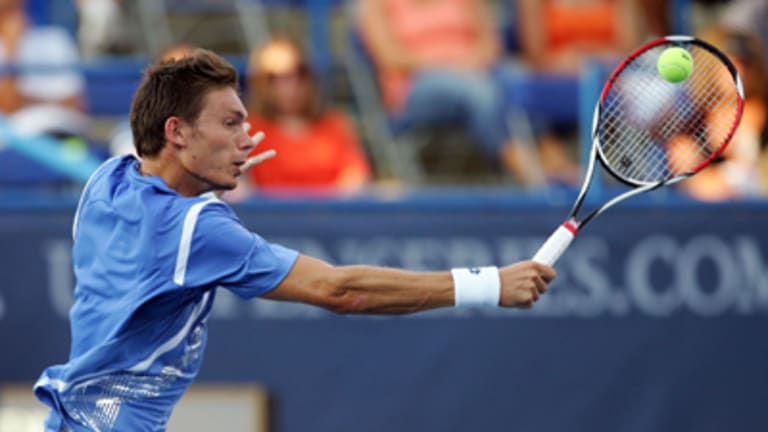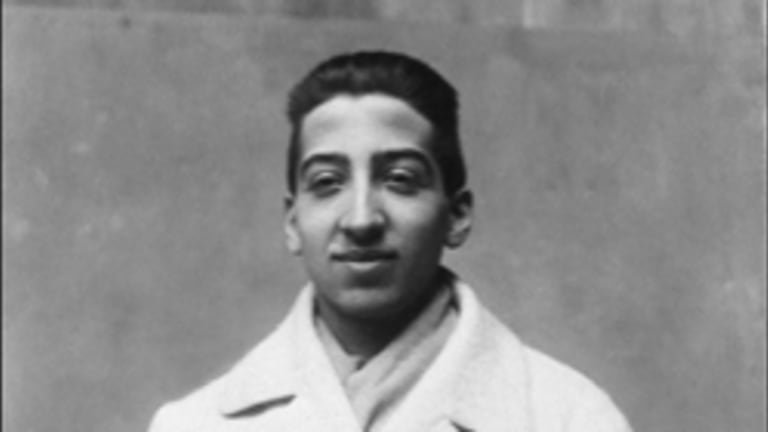When the men’s draw came out last week, one of the few first-round matches most of us circled was Andy Roddick, quintessential American, vs. Fabrice Santoro, Frenchman par excellence. After waiting for two days and all 63 of the other first-round contests, we finally got to see the oddest of odd couples face off Wednesday night.
Roddick and Santoro are more than an opposites; they representative extreme versions of the styles and philosophies that have characterized their country’s tennis players for more than eight decades. Roddick is the ultimate first-strike artist, a preemptive missile launcher and intimidator. Santoro is the sport’s most idiosyncratic artiste.
This clash of worldviews has deep roots in the history of the game—eight decades deep, in fact. Roddick and Santoro are descendants of a much more accomplished Frano-American pair from the 1926, Bill Tilden and René Lacoste. Big Bill and the Crocodile (sounds a little like A-Rod and the Magician from a syllabic point of view, doesn’t it?) were both something unique and unheard of these days: self-made aristocrats. Tilden, born into Philadelphia society, was a middling player until his late-20s, when he dedicated himself to the sport and became world champion. Lacoste, also a son of wealth, didn’t play at all until he was 15. When he told his father he wanted to pursue tennis, dad said he would support him, as long as he became the best player in the world within five years. Lacoste did just that by studying Tilden and developing a game—unflaggingly consistent, with a wicked slice serve—with the primary purpose of beating Big Bill. By 1926, he had taken Tilden’s spot at the top.
So if French tennis players seem a little foreign, in both style and attitude, to the Stateside fan, that shouldn’t be too surprising: Their greatest forebear’s game was designed in direct opposition to an American’s. Between 1920 and now, of course, there has been no competition between the two countries: America dominated tennis for most of the 20th century, while France has been famous mostly for major-championship futility—Pete Sampras won 14 Slams; French men during the Open era have, together, won one. But a country's contribution to a sport can’t be measured in victories alone. I know, that sounds like a very French thing to say, but walking around during the early rounds of a Grand Slam these days, you realize it's true. Today at the Open, the grounds were swarmed with French players off all conceivable varieties. For any lover of tennis as we’ve always been told it was meant to be played—i.e., with a balanced game and a dash of elegance—they provided more reasons to watch than any other nation’s in town, including the home country’s.
On Court 14 you could see a young French doubles team, Jeremy Chardy and Gilles Simon, covering every crevice of the court in a few seconds. Simon is diabolical with angles from the front and back court, and while Chardy has a more Americanized game—hammer serve, full-blast forehand, and a tendency to shout “Yes!” after a winning shot—he won the first set with a perfect topspin lob. You could also have seen Simon argue a call in what I thought was a highly French way: He looked at the mark and stuck his lower lip out.
On the Grandstand you could see the return of Jo-Wilfried Tsonga, the Frenchman and power baseliner who lit up the Aussie Open. His hat was still tugged sideways, but he was rusty to start and lost the first set to a journeyman. He got his jumping ground strokes in gear in the second set and cruised from there. Tsonga, compared to his more diminutive countrymen, also plays a highly Americanized Big Game, but he does it without the awkwardness that characterizes so many Americans now. The difference? Let’s call it je ne sais quoi—in other words, I don't know what. My favorite moment of the match came when Tsonga’s opponent hit an absolutely ungettable drop shot. Before it even had landed a second time, Tsonga had stopped and given him a big thumb’s up. There was something appealingly unaffected and simple about the gesture.

